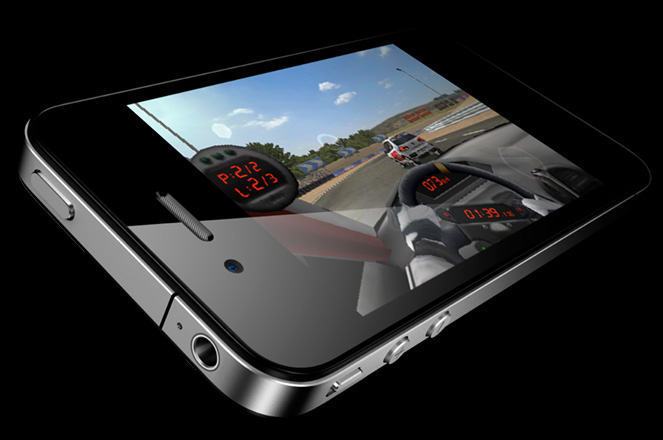
Given that today’s announcement of iPhone 4 contained almost nothing surprising, you’d think everything that needed to be said has already been uttered. You’d be wrong.
In fact, the most important part of Jobs’ keynote today was not the the arrival of a phone we all knew was coming. No, it was a slide near the end that Apple have shown before that stated that Apple exists at the intersection of technology and ‘the liberal arts’. Here’s what Jobs said about it:
I put up this slide earlier this year, and to me it represents what Apple is all about. It’s not just a technology company, even though we have and invent some of the highest tech in this industry. It’s more than that. It’s the marriage of that and humanity.
What does that mean? Well, what Apple demonstrated today was that for better or worse, they are the people defining not just the world of technology, but also part of contemporary culture. And by doing so, they are at the forefront of how technology is integrating itself into our lives.
Here is why Apple are the technology world leaders – while everyone else is often left playing catchup.
To Apple, Design = Experience, Not Aesthetics or Tech

Almost all companies that produce hardware or software focus on two things: making appealing, cutting-edge tech (like HDTV and Blu-Ray); or enabling a specific feature that consumers want (like say, adding music playback to a phone). But there’s a third, crucial aspect to tech that only Apple seems to focus on: what it feels like to use something.
Jobs and Apple’s designers have gone on record saying that to them, design isn’t about how something looks or behaves – it’s about the experience of actually playing with and utilizing a device. This is why Apple put so much time into making things feel satisfying to use – like Coverflow or the original iPod interface.
iPhone 4 furthers this in simple ways. First, it’s faster – which is a big deal for user experience (and if you don’t believe me, ask anyone who’s used an old version of Android compared to 2.2). Second it adds a lot of features in a smooth, integrated way – including seamless multitasking – which augments the overall experience. And third, it simplifies once complex tasks like video editing with intuitive and cheap applications.
By doing do, Apple have emphasized that it is the user – and not the gadget – that is paramount, making the performance of a specific task the goal rather than simply adding things to a feature list.
Retina Display: Apple Get How and Why People Read
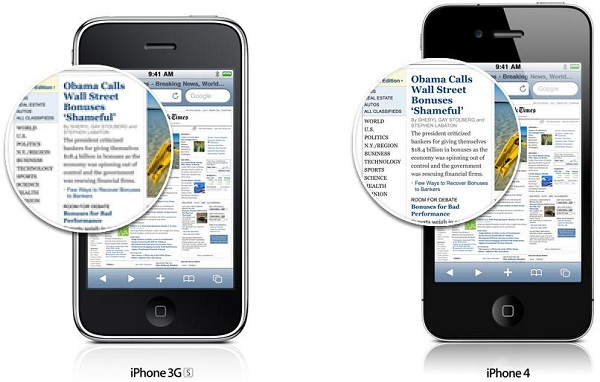
Prediction: with Retina Display, Apple have put one more nail in the coffin for print media.
Why? Because what the (stupidly named) Retina Display does is reproduce the quality of print in the convenient form factor of digital. While thus far in electronic reading you either got the drawbacks of the Kindle etc. (slow refresh, no backlight, dull, low quality) or the downsides of LCD (fuzzy text, eye strain), we are now a step closer to digital screens being better for reading than print (if they aren’t already).
Sure, not every problem is solved. Battery life on LCDs is still too low and even the iPad’s great IPS screen is invisible on a sunny day. But by creating a display that rivals a glossy magazine for sheer visual quality, Apple have understood that reading is as much a tactile, aesthetic experience as it is anything else.
Ask anyone who reads Wallpaper or even something like the New Yorker – how the magazine looks and feels is key. By making the display look as good as paper, Apple have given even the staunchest print lovers a reason to switch to digital by focusing on what experiences people are after and now what ‘technical features’ they want.
Facetime: People Always Trump Tech
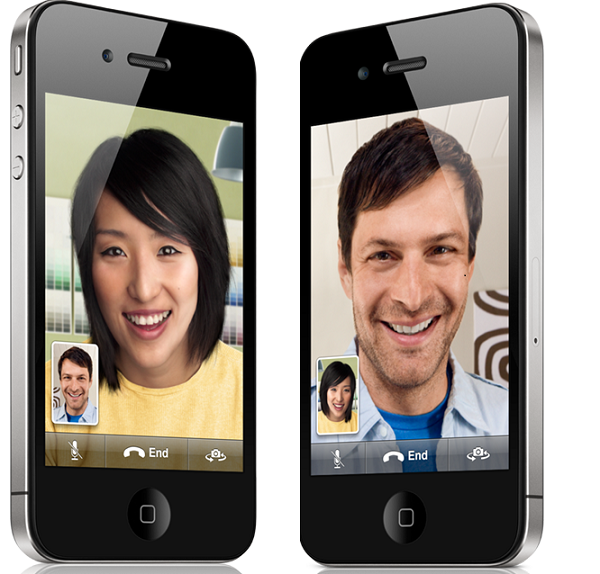
The announcement of a Wi-Fi only video calling service was, on a technical level, a bit of a letdown. After all, how can you call this the ‘debut’ of mobile video calling if it isn’t all that mobile (for mobility, 3G > Wi-Fi, right?)?
But what it again shows is that Apple understands that people want to connect easily and without fuss. From what we’ve seen of the app, it looks very simple and straightforward – which are obviously Apple hallmarks – and that it will quickly become a selling point. Because Apple’s user-friendliness is well-known, this once futuristic feature will now quickly become mainstream.
By focusing on what people want to do and how it feels to accomplish that, Apple have once again sidestepped making ‘tech’ the big issue, and instead have highlighted what people want to do with technology. Sure, people who will decry the fact that Android had this first or that this is hardly an improvement from Skype et al will miss the fact that it’s precisely the ease and accessibility of the user experience that makes this different. It’s not about technology – it’s about achieving certain ideals.
A Truly All-in-One Device is ‘User-Friendly’ Defined
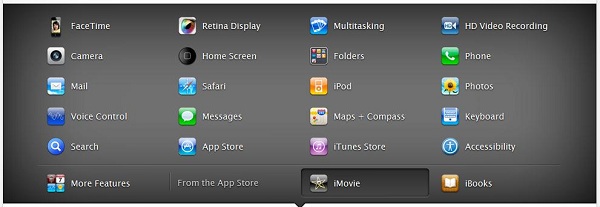
While I can guarantee you no serious videographer or photographer would be caught dead using an iPhone 4, it doesn’t matter one bit. For most people, the iPhone is now the only device they will need to carry. And the emphasis on making the iPhone people’s default device is better for us all, because it makes life easier and more straightforward.
Think about it: with one device you can record HD video, take usable photographs, surf the net, check email, listen to music, watch video, read books and newspapers – and maybe make the occasional phone call. Despite Apple’s tendency for elitism, that is a pretty populist, user-friendly move – especially because even the much-improved Android 2.2 still trails the iPhone in sheer, intuitive user-friendliness.
And why is such a simple idea important? Well…
Apple’s Focus Is How We Live Our Lives
At the end of the day, what all of this suggests is that Apple doesn’t start with tech first and then see what they can do from there (which is Sony’s M.O.). They first ask what people want to do and figure out how to make tech do that. iPhone 4 seems further proof that, for better or worse, Apple are at the forefront of integrating technology into our lives. But…
There’s a Downside…
I wholeheartedly believe all I’ve written above. But Apple’s foresight and dominance of ‘the cultural zeitgeist’ comes with a downside. After all, what this means is that a company whose primary concern is profit are changing culture.
In some ways this can be great. By kickstarting the digital music revolution with the iPod, Apple made accessing music much easier.
But it also means that a CEO who seems like a prude and is obsessed with controlling the user experience is making a lot of decisions that not only affect the world of technology, but the world-at-large as well.
It’s a tough nut to crack. On the one side, Apple are doing great things. On the other, by being the only company who seem to truly get the cultural role of technology, we’re handing over a lot of control to a profit-motivated company. How we fix this dilemma is a problem no-one has yet been able to figure out.
What do you think Techi readers? Why are Apple so much better than other companies at creating ‘experiences’ rather than gadgets? And is this a good or a bad thing?


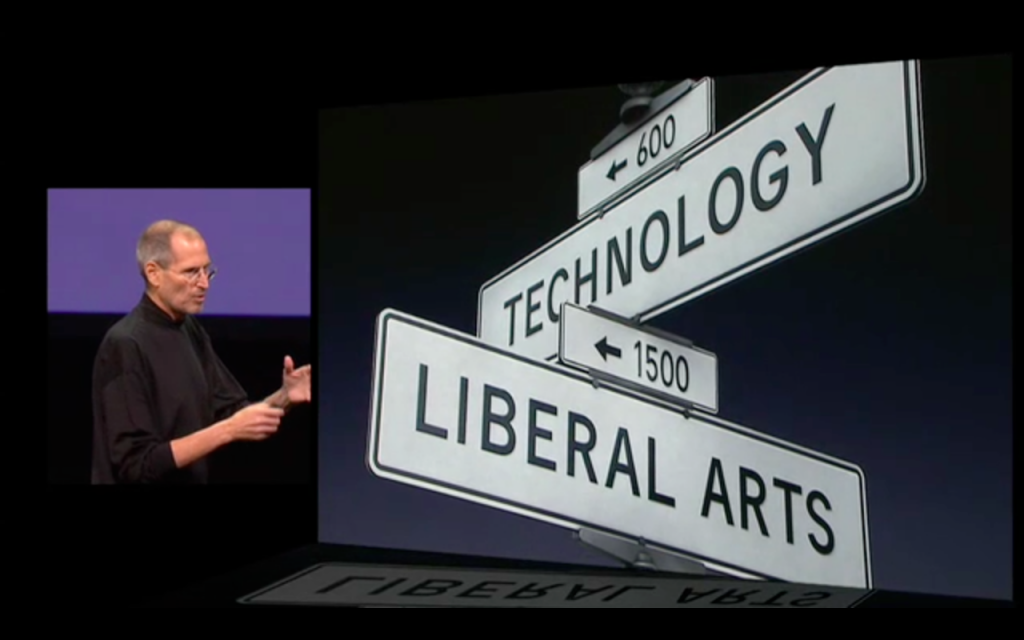
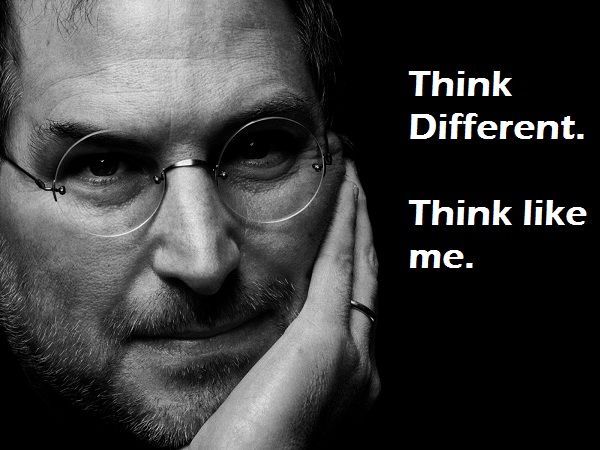
GIPHY App Key not set. Please check settings
22 Comments